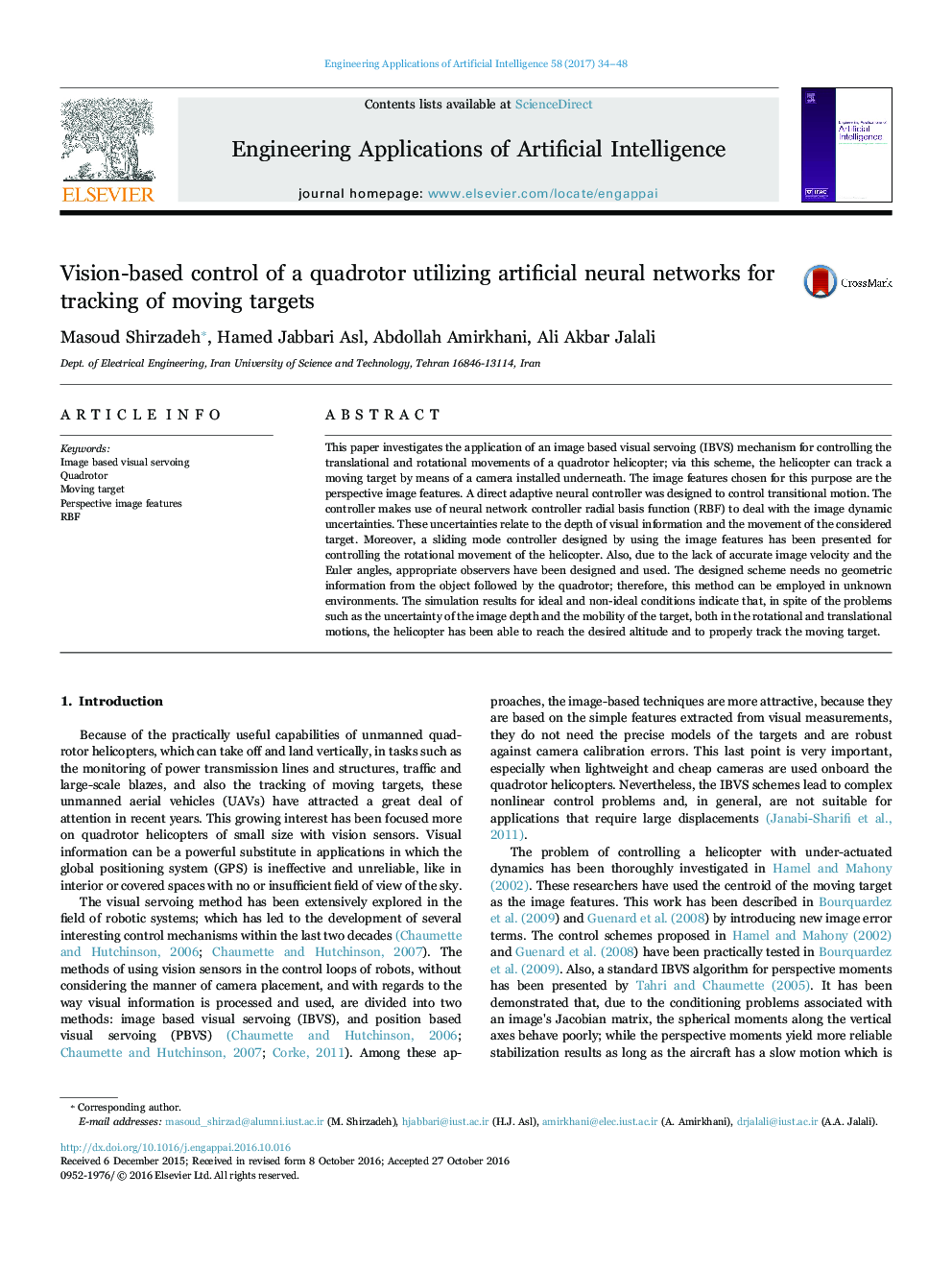| Article ID | Journal | Published Year | Pages | File Type |
|---|---|---|---|---|
| 4942784 | Engineering Applications of Artificial Intelligence | 2017 | 15 Pages |
Abstract
This paper investigates the application of an image based visual servoing (IBVS) mechanism for controlling the translational and rotational movements of a quadrotor helicopter; via this scheme, the helicopter can track a moving target by means of a camera installed underneath. The image features chosen for this purpose are the perspective image features. A direct adaptive neural controller was designed to control transitional motion. The controller makes use of neural network controller radial basis function (RBF) to deal with the image dynamic uncertainties. These uncertainties relate to the depth of visual information and the movement of the considered target. Moreover, a sliding mode controller designed by using the image features has been presented for controlling the rotational movement of the helicopter. Also, due to the lack of accurate image velocity and the Euler angles, appropriate observers have been designed and used. The designed scheme needs no geometric information from the object followed by the quadrotor; therefore, this method can be employed in unknown environments. The simulation results for ideal and non-ideal conditions indicate that, in spite of the problems such as the uncertainty of the image depth and the mobility of the target, both in the rotational and translational motions, the helicopter has been able to reach the desired altitude and to properly track the moving target.
Keywords
Related Topics
Physical Sciences and Engineering
Computer Science
Artificial Intelligence
Authors
Masoud Shirzadeh, Hamed Jabbari Asl, Abdollah Amirkhani, Ali Akbar Jalali,
